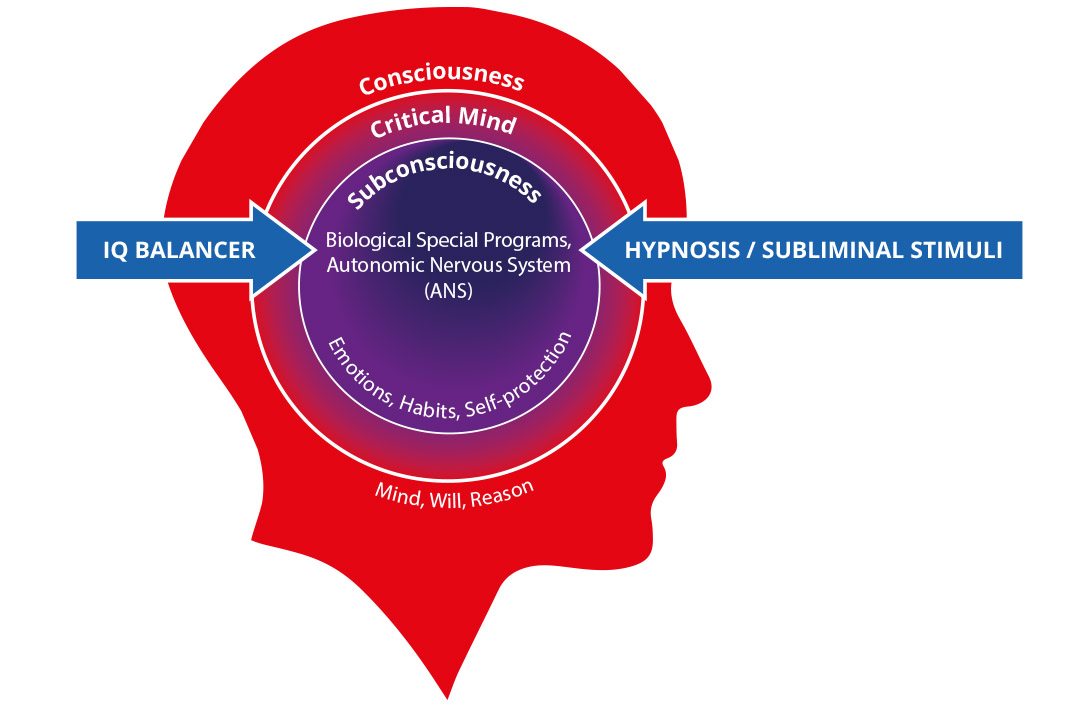Hypnosis is much better than its reputation – if you find the right therapist. Or use the appropriate techniques
Part 3 of our series: Learning in your sleep
Quitting smoking, losing weight, overcoming fears or old traumas: With hypnosis we can dissolve patterns buried deep in the subconscious and anchor new beneficial information. Yet many people are sceptical about this centuries-old method – too much obscure “news” is known about “departed” people who were allegedly made docile by insidious hypnotists.
Hypnotherapy is a proven technique that can serve us in many ways. It can be described as therapy or coaching in a relaxed, focused and receptive state. It is the oldest and most effective method of helping people. In this special hypnotic state of consciousness, different deeper levels of the subconscious can be reached. And in these, one can then work in different ways – depending on the content and goal of the hypnosis session. Causes and related connections in daily life are uncovered. And the insights gained enable fundamental and profound changes within the human system.
Here one works at the basis, namely directly in the subconscious. In this way, something becomes feasible that cannot take place on the purely mental level: the dissolution and detachment of everything that does not belong to us. We can free ourselves inwardly from emotional ballast and inner limitations.
Levels of consciousness
In order to understand hypnosis, we need an idea of how our mind is structured. For this, we have slightly modified the well-known Mind Model by Gerald F. Klein (see picture below). It shows the different parts of the mind and makes some concepts clear. Our model is based on three superordinate levels of the mind: The subconscious level, the conscious level and as a control instance in between the critical mind (filter), which has to be bypassed in the hypnotic work in order to be able to work in the unconscious area.

This critical mind or “inner guardian” is the reason why we recognize a cause but often fail to implement the necessary change. The pure mind cannot access these subconscious areas, in which many basic patterns of thought and behaviour are firmly anchored. This model makes it clear on which level the hypnotic work takes place. Hypnosis works and has an effect on the level where old programming from outside – mostly from childhood – and experiences from old lives are located and which determine our perception, views and actions from there.
Depending on the competence and specialization of the therapist, hypnosis is used for sleep disorders, depression, fears, pain, addictions, overweight, underweight, psoriasis, allergies, lovesickness, insecurity, exam stress and the resolution of the consequences and burdens of trauma. The list of possible applications is long and the effectiveness is very high compared to the usual therapy offers.
Effectiveness of different forms of therapy
- Psychoanalysis/talk therapy: 38% improvement after 600 hours
- Behavioural therapy: 72% improvement after 22 hours
- Hypnotherapy: 92% improvement after 6 hours
How does hypnosis work?
Trust is the most important prerequisite: At the beginning, it is important to listen to the therapist’s words and to let him show us the steps and the way and also to walk this route, because he cannot and will not take that from us. The success of each session is the result of good interaction between client and therapist.
For profound and long-term change, one has to go back to the source, i.e. find the cause and then resolve it, but from a dissociated perspective (bird’s eye view and observing). Otherwise, only a shifting of the problem takes place. Once the cause is identified, the client has the opportunity to look at the experience from a different perspective. He can re-evaluate the situation and experience it like a new experience. Therefore, the therapist should have a well-stocked therapeutic toolbox and be at the side of the person in trance at all times in a responsible and loving way, so that he or she feels a permanent sense of security. For this reason, trust between therapist and client is the basis for the success of hypnosis.
The best thing about it is that the client perceives himself as an observer of these original events, which makes retraumatization (as could happen in pure talk therapies) almost impossible. The otherwise usually evaluating and depreciating mind, which functions as the inner guardian of the unconscious, is on holiday, so to speak, through the introduction into the hypnotic trance and is allowed to relax during these processes. The whole perception is focussed and carefully inquiring to wondering, and from this arises the willingness to let go of the old limitations and to transform. New evaluations are created, which in the future will also lead to new effects in consciousness.
Hypnotic states with the IQ Balancer
Even without a therapist, very good results can be achieved when working on the subconscious level. Special devices can make hypnotic self-treatment effective. For example, the new IQ Balancer / SEIDU: It generates biocompatible signals with which deep physical and mental relaxation can be achieved in only 20 minutes. Thanks to externally inaudible ultrasound frequencies, the mind reaches the alpha or theta state in a short time. Subliminal stimuli or inaudible suggestions that go directly into the subconscious can positively influence and resolve familiar issues. With additional special audio content, we can change our limiting thought and behaviour patterns that block our free development. With the help of appropriate suggestions and affirmations (subliminal stimuli), bio-logical conflicts (germ leaf-specific tissue reactions) are also easily and effectively brought to a resolution. You can find more information about the IQ Balancer here.
From our series: Learning in your sleep
- Part 1: Hearing through your skin – Patrick Flanagan and his Neurophone
- Part 2: Subliminal stimuli: Can they help you learn in your sleep?
- Part 3: Hypnosis: Effective therapy to get rid of old mental ballast
- Part 4: The development of the IQ Balancer
- Part 5: Functions and Application of the IQ Balancer
- Part 6: Customer experience with IQ Balancer technology
- Part 7: The iQ Balancer compared to frequency and magnetic field devices


